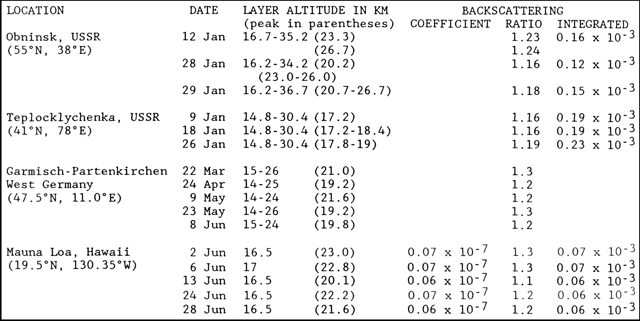Report on Atmospheric Effects (1980-1989) — June 1989

Atmospheric Effects (1980-1989)
Scientific Event Alert Network Bulletin, vol. 14, no. 6 (June 1989)
Managing Editor: Lindsay McClelland.
Atmospheric Effects (1980-1989) No new volcanic injections into the stratosphere
Please cite this report as:
Global Volcanism Program, 1989. Report on Atmospheric Effects (1980-1989) (McClelland, L., ed.). Scientific Event Alert Network Bulletin, 14:6. Smithsonian Institution.
Atmospheric Effects (1980-1989)
All times are local (unless otherwise noted)
Lidar data from Northern Hemisphere stations showed no evidence of new injections of volcanic material into the stratosphere (figure 67). A polar stratospheric cloud, with strongest backscatter at about 23 km altitude, was detected from Obninsk, USSR on 1 February.
Information Contacts: Sergei Khmelevtsov, Institute of Experimental Meteorology, Lenin St. 82, Obninsk, Kaluga Reg., USSR; Thomas DeFoor, Mauna Loa Observatory, P. O. Box 275, Hilo, HI 96720 USA; Horst Jäger, Fraunhofer-Institut für Atmosphärische Umweltforschung, Kreuzeckbahnstrasse 19, D-8100 Garmisch-Partenkirchen, West Germany.

